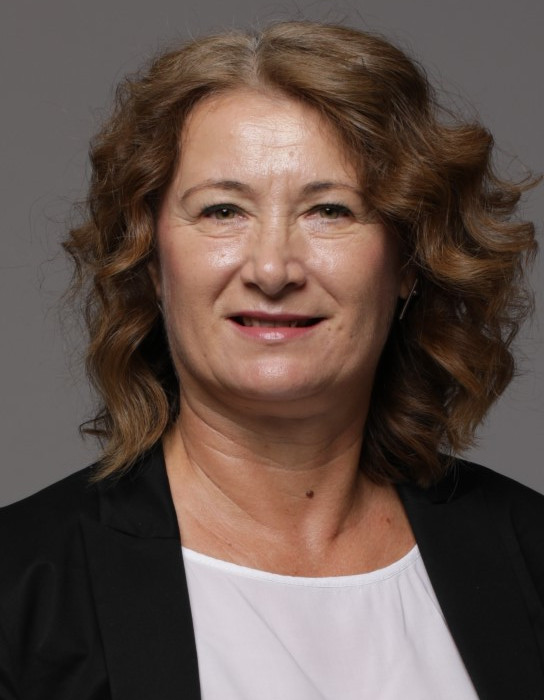Physics 2
Laboratory exercises
Course Description
Study Programmes
University undergraduate
General Competencies
Students completing this course will: understand, appreciate and utilize basics of optics, wave theory and atomic physics in modern technologies and its devices; understand the fundamental principles of physics to prepare students to continue education in modern science and technology, as well as forming a foundation for life-long learning.
Learning Outcomes
- Analyze oscillatory systems in mechanics.
- Apply the linearization technique to equations of motion of oscillatory systems.
- Explain the wave equation in nondispersive medium.
- Derive the electromagnetic wave equation from the Maxwell equations.
- Analyze optical systems using the methods of geometrical optics.
- Explain the phenomena of interference, diffraction and polarization of light.
- Explain Planck's law of black body radiation.
- Relate the atomic spectrum to quantization of energy levels.
Forms of Teaching
Lectures are delivered to groups of approximately 120 students using electronic presentations, detailed derivations on the blackboard and demonstration experiments.
ExamsWritten mid-term exam and the final exam consist of four excercises and a number of multiple choice questions.
Laboratory WorkStudents perform six laboratory experiments, carry out the analisys of the measured data and write the final report for each experiment.
ExperimentsLectures are supported by demonstration experiments that illustrate the concepts of physics. Approximately 30 mins / week.
ConsultationsAt least once a week each professor is available to the students for consultations.
E-learningDuring the semester homework assignments are delivered to the students through the e-learning system Merlin (Moodle).
Other Forms of Group and Self StudyIn approximately 4 terms per semester additional exercise-solving skills are demonstrated by assistants.
Grading Method
| Continuous Assessment | Exam | |||||
|---|---|---|---|---|---|---|
| Type | Threshold | Percent of Grade | Threshold | Percent of Grade | ||
| Laboratory Exercises | 5 % | 10 % | 5 % | 10 % | ||
| Homeworks | 0 % | 10 % | 0 % | 10 % | ||
| Mid Term Exam: Written | 0 % | 40 % | 0 % | |||
| Final Exam: Written | 0 % | 40 % | ||||
| Exam: Written | 0 % | 80 % | ||||
Comment:
In the mid-term exam and in the final exam one (of four) excercises must be correctly completed. In the written exam two (of six) excercises must be correctly completed.
Week by Week Schedule
- The theory of elasticity-introduction. Oscillations. Tension and compression. Modulus of elasticity. Poisson ratio. Examples and sample problems. Simple harmonic motion: the force law, equation of motion, initial conditions. Experiments with the spring. Phasors. Harmonic motion: energy considerations.
- Pendula. The simple pendulum. The physical pendulum. Torsion pendulum. Equations of motion. Torsion modules. Experiments and examples. Damped simple harmonic motion. Equation of motion, solution for weak damping, analogy with electrical oscillatory circuit. Examples and sample problems.
- Damped harmonic motion II. Forced oscillations and resonance. Logarithmic damping decrement and Q-factor. Damped harmonic motion: energy consideration. Forced oscillations and resonance. Experiments. Analogy with electrical oscillatory circuits. Oberbeck’s pendulums. Experiments. Modulated oscillations. Lissajouss’s curves. Experiments. Computer exercises.
- Waves. Progressive waves. Reflection and superposition. Wave speed. Reflection and refraction. The principle of superposition. Waves in a stretched string. Standing waves. Frequency specter. Experiments. Fourier analysis of waves in a stretched string. Wave equation. Energy and power in a traveling wave.
- Longitudinal waves. Sound waves. Intensity and sound level. Longitudinal wave equation. Experiments with the spring. Longitudinal standing waves. Experiments – Kundt’s tube. Standing waves in solid state materials. Ultrasound – generation and the application. The Doppler’s sound effect.
- Basics of electromagnetism. Electromagnetic waves. Gauss law and the First Maxwell’s Equation (both in differential and integral form). Ampere-Maxwell theorem and Second Maxwell’s Equation. Third Maxwell’s Equation. Faraday’s law of induction. Faraday’s experiments. Fourth Maxwell’s equation. Wave equation. Experiments with polarization of EM waves. Poynting’s theorem and Poynting’s vector. Energy transport. Fresnel equations. Computer exercises.
- Photometry. Geometrical optics I. Basic photometric units and quantities. Experiments. Basic laws of geometrical optics. Experiments. Fermat’s principle – reflection and refraction. Fresnel equation and geometrical optic laws. Experimental and demonstrational set. Computer exercises. mirrors. Spherical refracting surfaces. Thin lenses formulas. Aberration. Prisms. Dispersion. Experiments.
- E X A M
- Physical optics I. Interference. Light as a wave. Young’s experiment. Coherent light. Intensity in Double-slit interference. Minimums and maximums. Light interference devices. Fresnel biprism experiment. Michelson’s interferometer. Newton circle. Polarization of light. Holography. Brewster law. Selective absorption.
- Physical Optics II. Diffraction of light. Multiple source interference. Gratings: dispersion and resolving power specter. Experiments. Single-slit diffraction. Diffraction and optical grating. Polarization of light. Holography. Brewster law. Selective absorption. Polarization and absorption device. Faraday’s and Tyndal’s effect.
- Introduction to modern physics I. Blackbody radiation. Rayleigh-Jeans law of blackbody radiation, Stefan-Boltzman law. Wien laws. Planck law. Quantum hypothesis.
- Introduction to modern physics II. The photoelectric effect. Compton effect. The Bohr model of the hydrogen atom. Clarical explanation of photo effect. Experiments. Compton scattering. Thomson and Rutherford model of the atom. Computer exercises.
- The Bohr’s model of atom. Quantization. Balmer’s formula. Energy and orbit quantization conditions. Absorption and emission of light. Atomic specters. Franck-Hertz experiment. X-rays. Experiments. Bohr-Sommerfeld model of the atom. The Schrödinger equation. The Heisenberg uncertainty principles.
- Quantum numbers. Nucleus and nuclei-composition of nuclei. Radioactivity and nuclear reactions. Elementary particles. The Pauli exclusion principle and the structure of many-electron atoms. Experiments: detector types, beta-particle detection and gamma-radiation, radiation protection.
- E X A M


 Pristupačnost
Pristupačnost





